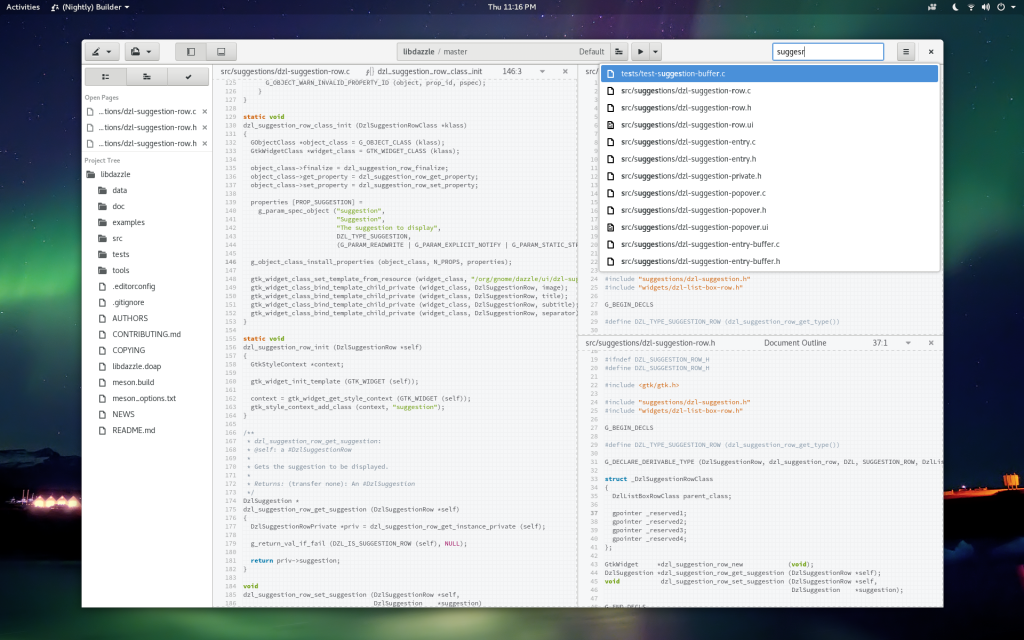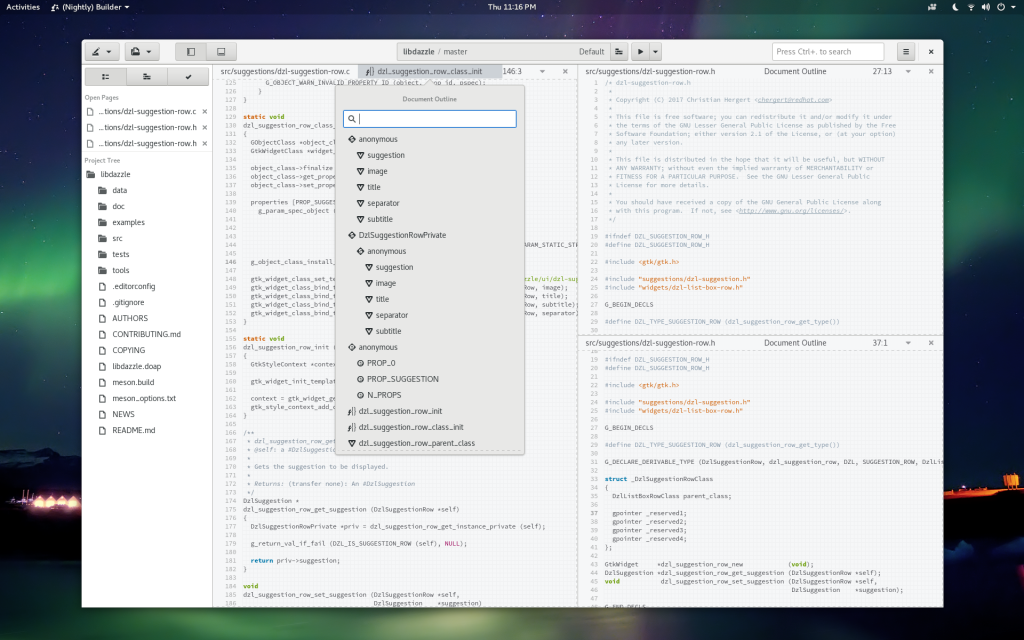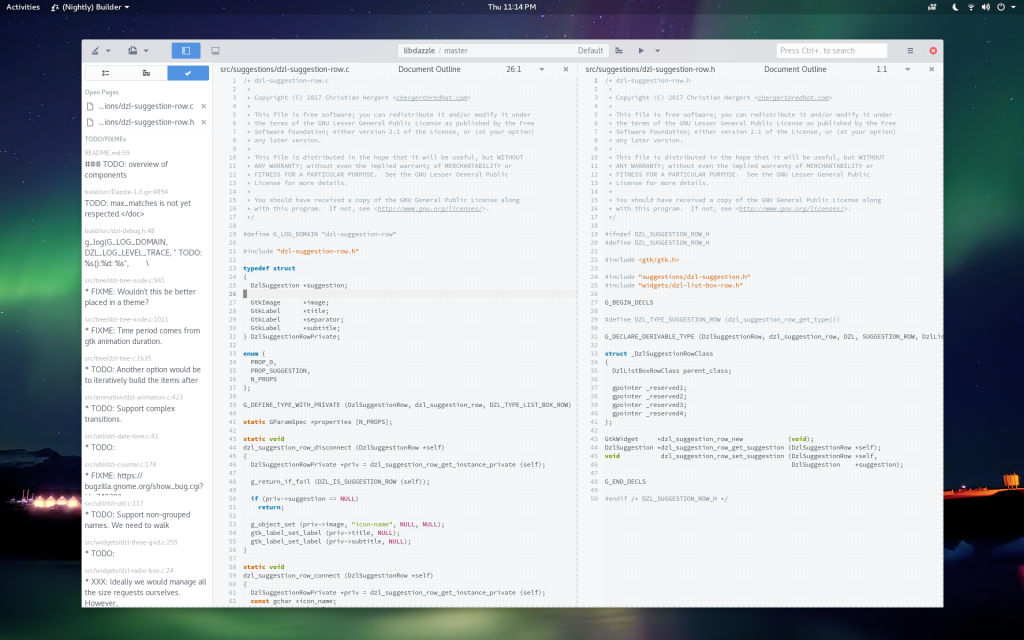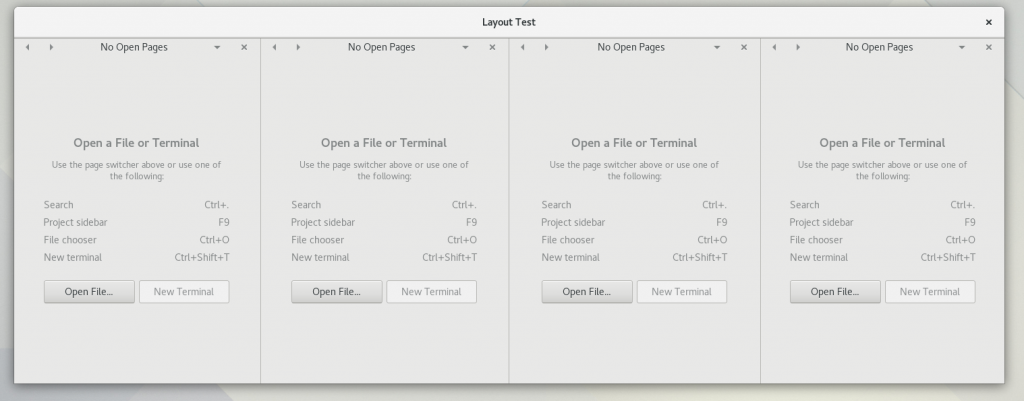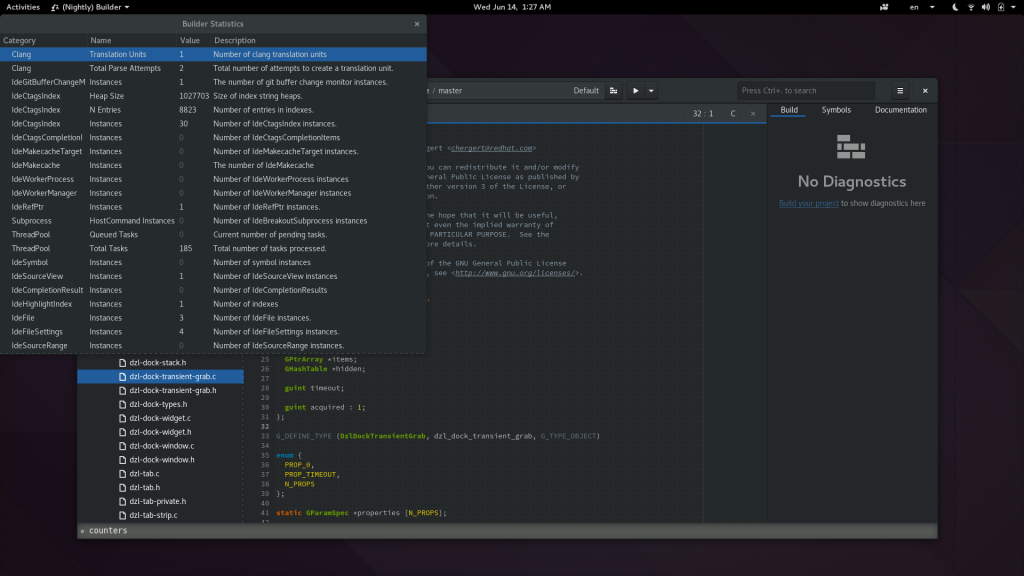Like every year, GUADEC has snuck up on me. I’ll be heading out to Manchester in a handful of days which means things are going to get hectic any moment now.
We just reached another milestone in our development phase towards 3.26. I’ve landed two important components which will have important roles in Builder’s future. The new visual layout, and the new shortcut engine. Neither are complete yet, but they are good enough to land on master and allow us to iterate without giant branches.
The new layout is based upon a design iteration lead by Allan which Andreas, Jakub, and myself took part. Not everything is implemented but the parts which most heavily contribute to user workflow are in place.
The new shortcut engine has also landed. This is a monumental amount of work because it completely overhauls the keyboard input model within Builder. We’ve moved to a “capture and bubble” event delivery for keyboard input so that we have more flexibility in how shortcuts are activated.
The event delivery is in one of three phases. Capture, Dispatch, or Bubble. The capture phase allows the widget hierarchy (starting from the toplevel) to handle an input event before the destination widget. Dispatch is delivery to the expected destination, where GtkBindingSets are activated. Finally, the bubble phase allows the hierarchy to handle the event if nothing handled it previously.
This also includes a whole swath of features around it for user-modifiable shortcut themes, custom keyboard controllers, a shortcut editor and more. To simplify the process of merging into Builder it has a compatibility interface to support CSS-based -gtk-key-bindings properties.
Effectively, bubble/capture allows us to have keyboard shortcuts that only activate if the source editor or terminal have not stolen the input. A convincing Vim implementation for our source editor can really benefit from this.
Enjoy some screenshots
